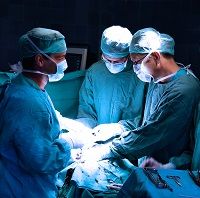Identifying Surgical Site Infection after Cesarean
The US Centers for Disease Control and Prevention reports that approximately 600 American women die in or shortly after childbirth every year. Roughly half of maternal deaths occur in women who have undergone cesarean section.

The US Centers for Disease Control and Prevention reports that approximately 600 American women die in or shortly after childbirth every year. Maternal death is always a tragedy, and roughly half of maternal deaths occur in women who have undergone cesarean section. Fifteen percent die due to surgical site infection (SSI). This makes maternal death a topic of importance to surgeons.
A prospective observational study published ahead-of-print in the American Journal of Infection Control looks at trends in maternal morbidity and mortality and examines how active monitoring by telephone might identify infection early in postpartum women with risk factors.
From 2013 to 2014, these researchers telephoned women (N=353) who had had high risk deliveries at least 30 days after cesarean delivery.
Among participating women, the researchers identified 14 cases of SSI. The majority of infections (10 of the 14) developed within 15 days after cesarean and persisted for approximately 12 days. Most infections occurred superficially in the incision, but a few were considered deep infection.
The sole risk factor for SSI after cesarean section was patients' American Society of Anesthesiologists (ASA) score. Higher ASA scores were associated with greater risk of infection. ASA scores of 1 or 2 appeared protective.
The authors stress that with early discharge's growing popularity, clinicians often rely on patients to identify infection and seek treatment. Doing so has obvious flaws. They note that using telephone calls to monitor may be both effective and cost saving, especially in the first 15 days after delivery. This is an attractive option for delivery services with limited resources. Targeting at-risk women with telephone calls after discharge may ultimately reduce morbidity and mortality.